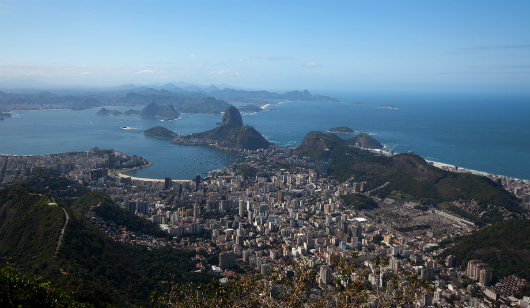Gentrification in Rio de Janeiro

Many believe that gentrification is a purely American and European phenomenon in which large numbers of college graduates move to cheap, urban areas and open yoga studios, green markets and “hipster” coffee shops. However, gentrification is not only a global occurrence but also an established urban renewal and regeneration strategy in all corners of the world.
The Oxford Dictionaries define “gentrification” as the “renovation or improvement (of a house or district) so that it conforms to middle-class tastes.” Middle-class tastes in American cities like Portland, Seattle or New York City usually relate to the rise of what sociologists term the “creative class”—a group of young people entering the workforce concerned with personal expression and technological advances more than monetary progress. Professor and urban studies theorist Richard Florida found that one-third of Americans belong in the creative class.
“I define the Creative Class to include people in science and engineering, architecture and design, education, arts, music and entertainment whose economic function is to create new ideas, new technology, and new creative content,” said Florida.
Although developing countries have not necessarily experienced as significant a rise of a distinct creative class, middle-class residents of the community as well as significant tourist populations have completely redesigned global cities. Specifically, some poor shantytowns—favelas—in Rio de Janeiro, Brazil have experienced a complete upheaval of population and culture to cater to new, wealthier residents.
“Pacification programs” that officials applied in the past fifteen years, especially those immediately before Rio’s hosting of the 2014 World Cup and leading up to the 2016 Olympics, have done as much harm as good.
Favela residents report that areas that were once slums, full of rampant drug gangs, violence and poverty, are now safe places to live, policed by a permanent security presence. Increased security in favelas has attracted a population with a sense for business and entrepreneurship, which keeps the economic interests growing.
Foreigners have recently entered the housing market in favelas in Rio and are buying property more frequently than locals. As tourists no longer have to pay taxes to drug gangs, many foreign and native residents advertised their property for temporary stay on the Airbnb website during the World Cup and Olympics.
As the value and popularity of the city increases with new construction and business opportunities, property prices have risen dramatically. Houses that cost $2,500 in 2006 cost $75,000 in 2014. As a result, whole socioeconomic groups no longer have the ability to live in the favelas that they once called home. Current residents are also struggling with rent increases and displacement, and are being forced to move to more dangerous favelas.
Ebilene Rodriguez Periera, a 54-year-old resident of a favela in Vidigal, an area in Rio, said that the new hotels and restaurants are being built for foreigners, “not for us.” Veronica Mora, another resident of a favela in Santa Marta, detailed community resistance against rent increases, demolitions and evictions.
“For years, the authorities did nothing when it was so dangerous to live here. Now that the area is finally safe, they want us to move out,” said Mora.
American researcher and former resident of Santa Marta, Charles Heck, finds that pacification programs—essentially government-sponsored gentrification programs—have changed urbanization and urban regeneration policies. Many new urbanization policies now deny current residents basic trash, water and electrical services in what some urban theorist experts call an attempt to force residents out. Gentrification in Rio de Janeiro has resulted in Rio’s strategic plan to provide for a 5% reduction in favelas from 2013 to 2016.
“Post-UPP, urbanization has focused primarily on land titles and new businesses rather than health, sanitation, education and other infrastructure,” said Heck.
The U.N. has critiqued Rio’s implementation of gentrification policies in the past, as an organized governmental effort to include residents of favelas in urban plans is essential to a thriving city. Inclusion of large social and socioeconomic groups encourages citizen participation and increases the viability of solutions to social justice issues in Portland and Rio de Janeiro alike.
– Paulina Menichiello
Sources: Business Insider, NPR, Oxford Dictionary, The Guardian
Photo: Flickr
